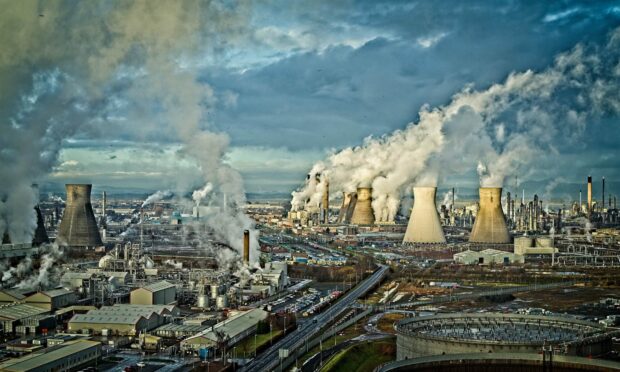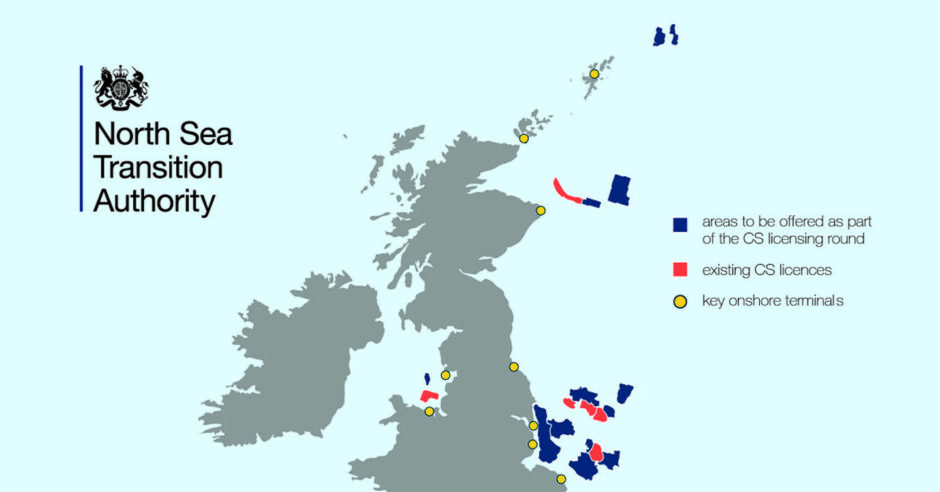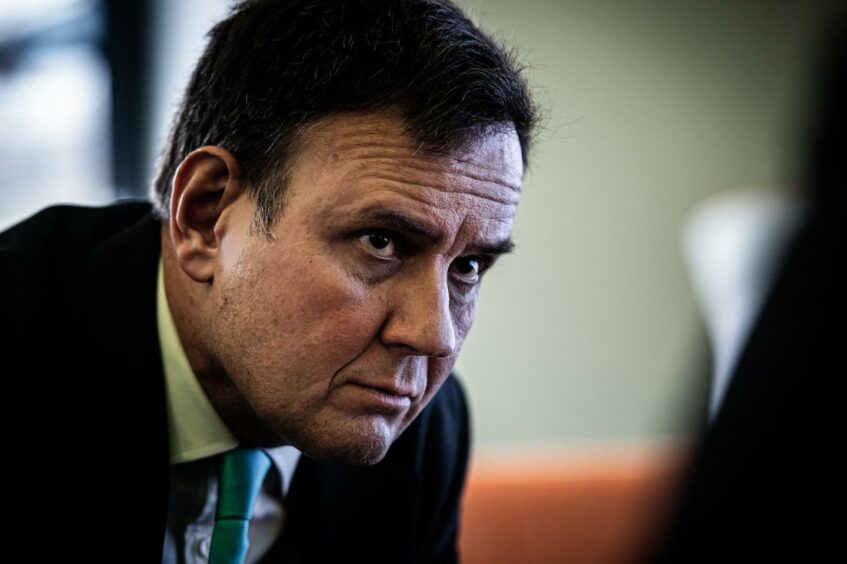Bids are now being accepted for the UK’s first ever carbon storage licensing round, with 13 areas up for grabs including significant areas in the North Sea.
Industry regulator the North Sea Transition Authority (NSTA) has officially launched the process, which could pave the way for decarbonising large swathes of the UK economy.
Alongside the six storage licenses that have already been dished out, the new areas have the potential to make a significant dent in the target to lock away between 20 to 30 million tonnes of CO2 by 2030.
Carbon capture and storage (CCS) involves bagging emissions from industrial processes and safely depositing them offshore, deep underground in geological formations.
It is expected to play a “crucial role” in decarbonising major polluting clusters, including Grangemouth, Humber and Teesside.
The 13 areas being offered for licensing are off the coast of Aberdeen, Teesside, Lincolnshire and Liverpool in the southern North Sea, central North Sea, northern North Sea, and East Irish Sea.
They are made up of a mixture of saline aquifers and depleted oil and gas field storage opportunities.
While this round is the first, it is unlikely to be the last, with estimates that as many as many as 100 CO2 stores could be needed in order to meet the net zero by 2050 target.
Energy and climate change minister Greg Hands said: “We’re determined to make the UK a world leader in carbon capture, which will be crucial in helping us reduce emissions and protect the viability and competitiveness of British industry.
“This licensing round is an important step in making this a reality, helping support new jobs across the UK and encouraging investment in our industrial heartlands.”
In its recent report, the Intergovernmental Panel on Climate Change (IPCC) underlined the need for CCS in order to zero out emissions from industry sectors.
‘High-quality bids’ a must
The NSTA has launched the licensing round in response to “unprecedented levels of interest” from companies eager to enter the market.
And the level of interest already expressed means the regulator is expecting “strong competition”, meaning entrants will have to produce “high-quality bids” to win licences.
In choosing suitable areas to make available for licensing, the NSTA considered a range of issues, including co-location with offshore wind, with overlap between the two already emerging as a problem.
The application window is open for 90 days, closing on 13 September, and will be evaluated by the NSTA on technical and financial criteria.
It is expected that any new licences will be awarded early next year.
Up and running by the end of the decade
Different licenses are expected to proceed at different paces, due to their size and scale, but first injection of CO2 could come as early as four to six years after they have been allocated.
In addition to being awarded a licence from the NSTA, successful applicants will also need to obtain a lease from the Crown Estate or Crown Estate Scotland, depending on location, before they can progress a project.
Andy Samuel, NSTA chief executive, said: “This is an important day on the path to net zero emissions. In addition to the huge environmental benefits of significantly reducing carbon dioxide emissions into the atmosphere, the facilities will provide opportunities for many thousands of highly-skilled jobs.
“Carbon storage is going to be needed across the world. There is growing investor appetite and we are keen to accelerate development of the carbon storage sector so that UK is well-positioned to be a global leader.
“The NSTA is ready to work with industry, government, regulators and others to deliver these exciting projects at pace.”
Will Webster, energy policy manager at Offshore Energies UK (OEUK), said carbon capture technologies will be a key element in helping the UK reach net zero.
“It is particularly important for industry, especially heavy industries which need a lot of energy and so produce a lot of CO2. This applies particularly to the cement and steel industries, petrochemical refineries, and power generation.
“The UK’s oil and gas sector has a highly skilled workforce used to managing and transporting large volumes of gas safely and they will have all the knowledge needed to make this technology work.
“This is a long-term project – we want to be able to store 50 million tonnes of CO2 a year by 2035 and continue expanding after that. That means we need a long-term commitment from government, a clear regulatory framework, and business models that encourage early investment.”
Keith Wise, operations manager at OEUK, said: “Deploying CCUS will need the same range of skills and experience as the offshore oil and gas industry already possesses. That includes offshore engineering, geological and seismological sciences and many more. We look forward to seeing this emission reduction technology develop as a key part of the UK’s transition to net zero.”




Conversation